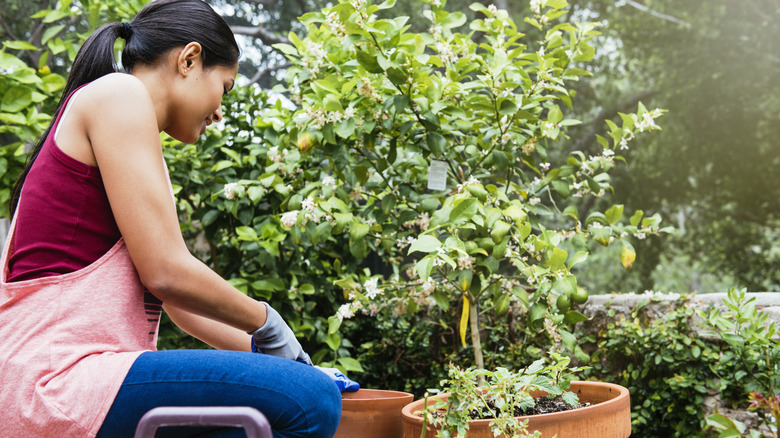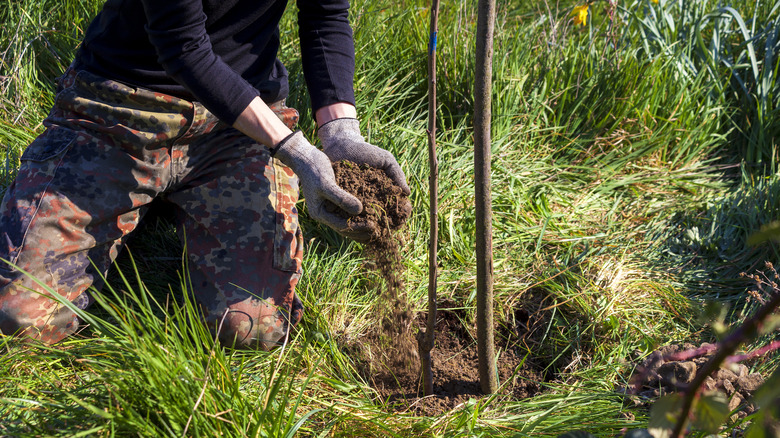Tips For Transplanting Fruit Trees In Late Summer, From Our Orchardist
Planting fruit trees is such a rewarding activity for a gardener with the anticipation of beautiful blossoms and delicious fruit once a tree reaches maturity. But fruit trees need proper care in their early years to make sure they become established. Timing is important when transplanting deciduous fruit trees (such as apples, pears, and stone fruit trees) from containers to the ground. Generally, it's recommended that fruit trees be transplanted during their dormant season in early spring. However, if you find yourself needing to transplant in late summer, there are tips to follow to help them thrive.
You may need to transplant in late summer because your fruit trees are in containers and getting root bound. Maybe you're redesigning your garden area and want to move the trees to a better location. Perhaps you got a deal on some fruit trees at an end-of-season sale at the nursery or online. Whatever the reason, it's not impossible to transplant fruit trees in late summer, but you'll need to take some important precautions to ensure the transplanting process goes smoothly.
It's best not to transplant fruit trees too far into autumn (late September onward) if you can avoid it because you want them to get acclimated in their new garden location before the first frost date. If a hard frost comes early, you can protect your newly planted fruit trees by wrapping them up in burlap or even a blanket to insulate them from freezing overnight. If deer are an issue in your garden, wrap young fruit trees in burlap or protect them with wire fencing until spring, when they're tall enough that deer can't reach their tender buds.
Tips for transplanting fruit trees in hot weather
Last year, I got some young peach trees and planted them in early September. They did well, and one even rewarded us with peaches this summer, confirming that it's possible to transplant fruit trees during their active growth cycle. I waited until the weather forecast had some cooler temperatures in store and some rain right after planting, avoiding high daytime temperatures above 80 degrees to give my trees a better chance of survival.
For planting fruit trees late in the season, here's something unexpected: you shouldn't use potting soil, potting mix, or compost to fill in the planting hole. Using potting soil or compost creates a permeable environment that makes the roots vulnerable to heat damage. Instead, fill in the planting hole with nearby "native soil" (the soil you excavated from the hole). Once you fill in the planting hole with the nearby soil, you can top-dress the surface with a bit of compost and water it well. Adding a bit of liquid seaweed the next day before watering provides additional minerals to help counteract the stress of transplanting.
To avoid hindering your fruit tree harvest, add a layer of natural mulch over the planting. This will insulate the fruit tree's roots from sudden temperature changes and conserve moisture. Water the transplanted tree well after planting and lightly each day for the first ten days. If the weather turns very hot again, water lightly twice a day, but do not overwater. Some leaves may turn brown or drop off, but this is not uncommon after the stress of transplanting.

